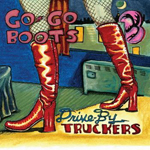The Greenhornes “4 Stars” Third Man Records
- Performance:

- Sound:

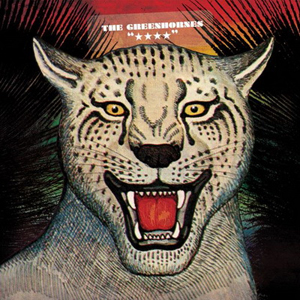
On December 8, 2010, I made a mistake. I suppose there really is a first time for everything. Anyone who pays attention to these things will know that I gave “Best New Vinyl Recording 2010” to the great Hacienda from San Antonio, Texas. That wasn’t the mistake. I caught their opening set on the previously mentioned date at the Independent in San Francisco and loved it. Why wouldn’t I? The problem is, and this is where the error occurred, that I left before the main event. It was a “school night.” I had to be at work the following morning and I wanted to exercise beforehand. So I missed the headliners. And the headliners were the Greenhornes. And the Greenhornes’ latest record, also released in 2010, is freakishly great. It’s called “4 Stars.” There aren’t enough stars in the galaxy to accurately describe this record. So I may have actually made two mistakes because “4 Stars” at least deserved honorable mention in the year-end roundup for 2010. And I have no doubt that they lit the Independent up like a pinball machine on the night of December 8, 2010. And I missed the next morning’s workout anyway.
If you like old garage rock and the types of songs found on the “Nuggets” compilations, then you like the Greenhornes. Unless you’re too cool for new music in general. I straddle that fence, but I’m not so cluelessly hip that I can’t tell when I’ve just been knocked out. “4 Stars” is the sonic equivalent of the Mike Tyson/Marvis Frazier fight in 1986. That fight lasted 30 seconds. Including the referee’s knockout count. I knew midway through album opener “Saying Goodbye” what I’d gotten myself into. You don’t commit a song of that magnitude to tape (or Pro Tools) and follow it up by dancing around the ring for ten more rounds. You deal punishing blows to the head and solar plexus and you walk out of the ring with your arms in the air. That’s what you’re up against when you take “4 Stars” for a spin. They’ll jab you with “Better Off Without It” which is catchier than it is heavy. And catchier than anything on the radio, plus it’s a song that you actually welcome having stuck in your head. If you make it through “Song 13” without crumpling to the canvas in aural ecstasy, you’re still not out of the woods. You haven’t even flipped the disc yet, pal. You’ll still have to deal with the barrage that is “Need Your Love” and “Left The World Behind” when you do. These two songs are the combination that ends the fight. The band lets up on the brute force attack after that, but they still toy with you and lull you in and out of reverie with Brit-Pop inspired fuzz tone melodies over heavy drums and bass. It’s a dizzying experience to say the least.
It looks like the Greenhornes took about eight years off between their last full-length release and the unleashing of “4 Stars.” I hope that’s not a pattern. There’s not a lot of point in talking about “separation” or “detail” here. This is true rock and roll with as much emphasis on the “roll” as the “rock,” and it’s close to the bone. The musicianship is there, no doubt about it, but the feeling is loose. The vinyl is an old-fashioned single platter with a die-cut cover. The big cat’s face folds out to reveal a side loading sleeve beneath. This will wear out with age just as all die-cut covers before it. That’s part of the charm. The record pressing looks a little shoddy, but the noise floor is very low with the exception of a couple of slight ticks. I was surprised by the discrepancy between what I saw on wax and what I heard through my speakers. Delightfully so. Liners are sparse, but they include a very brief write-up by Jim Jarmusch which is cool. The music is the thing though, and that’s clearly as it should be. The Greenhornes had a legit shot at “Best New Vinyl Recording 2010,” and I didn’t realize it in time. They were a contender, anyway. I wouldn’t put my band in the ring with them.
John Mellencamp “No Better Than This” Rounder Records
- Performance:

- Sound:

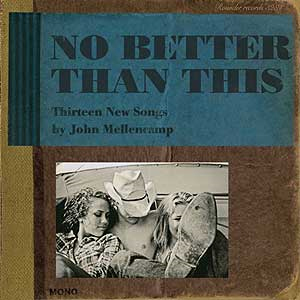
I’m a John Mellencamp fan. There. I said it. For some reason, it pains me to do so. I’m not sure why except that it suggests I’m getting old if I haven’t gotten there already. I mean, my mom recommended his new record to me. There’s a sign. But she had her own reasons for doing so beyond the fact that she caught a recent show of his which she thought was “great.” She knew I’d want to know that he recorded his new one, “No Better Than This,” with T Bone Burnett through a single microphone in mono direct to 1/4″ tape. (How awesome is it that my mom knows that I’d be into that?) Couple these points with the closeted Mellencamp admiration that I’ve hidden for all these years, and I discreetly took the plunge and ordered the vinyl version online. It was delivered in a non-descript cardboard mailer so none of my neighbors have any way of knowing what I’m up to. I listen to it quietly in case the young couple next door have company. I can see it now: they’re on the other side of my living room wall drinking to Kanye while the girls get rowdy and start booty dancing with each other. The guys are sipping whiskey, eyes on their girls at all times, discussing the diversification of their investment portfolios. I’m in my apartment at the edge of the world. Typing on my laptop, quietly absorbing my latest acquisition… by John Mellencamp. Things aren’t like they used to be, folks. How did I find myself here?
But, really, this one is especially interesting. I promise. He recorded the tunes at Sun Studios in Memphis, an African Baptist Church in Georgia, and (this is the part that I really like) in the San Antonio hotel room where Robert Johnson is thought to have recorded. Alright, maybe it’s not so interesting to anyone besides me and the gang at the assisted living community down the street. They spin the latest Mellencamp sides during Tuesday night bingo while I do the same on my own after work. Maybe it’s not that bad. Mellencamp has some bona fide American classics on his resume. Songs that I grew up with and that I still remember every word of right up to present day. Songs that are so catchy that they survived in my mind through college and the ten years after when I behaved exactly as if I were still in college. None of those songs, or any songs like them, are to be found on “No Better Than This.” If these tunes are catchy, it’s not in a “I can’t get that damned chorus out of my head” kind of way. These are old-timey folk songs. Mellencamp sounding older than he really is. And, by some strange twist in the popular psyche, I think he stands a better chance of finding a newer audience with this approach than he’d have had trying to remake “Pink Houses.” I seem to recall him foisting a rousing American anthem on us and it winding up in a Chevy commercial a few years back. Some post-9/11 schlock that killed my mellow and left me scampering for the mute button on my remote during a football time out. Thankfully and with love, none of those songs are to be found here either. He’s still angry and disturbed, touching on unemployment (“No One Cares About Me”) and the like, but he throws a good-natured bar room story tune in (“Easter Eve”) and – what else? – a devil song that he recorded in the San Antonio hotel room (“Right Behind Me”). Mr. Johnson wouldn’t have had it any other way, I’m certain. All of these are delivered quietly and free of histrionics. This is a true folk album, basically. It’s simply sung quietly and in a voice that is as familiar as tying your shoes by now. The effect isn’t startling. It’s welcoming. Feels kinda like going home somehow which kinda sums up the whole “Mellencamp thing,” I think. Or maybe I’m just old. Regardless, I think there’s a new audience in here for him if he can just get this record into their wide-eyed, callous-free hands.
The vinyl version of “No Better” is cool. The cover photo and title might remind one of Dylan’s semi-recent “Together Through Life.” If so, Marc Ribot plays David Hidalgo’s role as the band leader’s guitar foil. Mellencamp has always hired first rate talent and Ribot certainly counts for that. But “No Better” feels more like an artifact. Something you’d find through the Library of Congress or something. Rounder Records did a fine job with the pressing and artwork. There are no extras to speak of as far as digital copies, etc. But the songs are there, and they’re gonna stand up for a while for anyone who seeks them out. The “one mic trick” works well too. Gives the record a grainy, rich texture without sacrificing staging or sonic clarity. T Bone Burnett is fast approaching Rick Rubin’s reputation for taking artists who many feel have lost their relevance and breathing new life into their careers. The formula is simple: just let them play their songs and strip away the clutter rather than adding to it with guest vocalists and gimmicks. I don’ t know why being a Mellencamp fan has such a stigma attached to it… or why I feel like it does. I’m a proud lover of many artists of greater vintage. And now I’m a proud liker of “No Better Than This.” I bet you will be too if you give it a chance. The neighbors don’t have to know.
Chuck Berry “St. Louis To Liverpool” Chess Records/Speakers Corner
- Performance:

- Sound:


I’m sure glad that Chuck Berry stays mostly out of the spotlight these days. I’m afraid that if he didn’t, his bizarre behavior would eventually eclipse his greatness as a musician. We’ve seen it before. It may be a little too soon to bring it up, but the most obvious example is Michael Jackson. By the time he passed, I rarely thought of him as the performing genius of my youth. In fact, it took some newly released footage of his Pepsi commercial accident to remind me of what we’d lost. That man was at the top of his game when his hair caught fire that day. I almost felt guilty observing the circus that his life became later. And Chuck’s no angel, lest we forget. His temper is legendary, his “thrifty ways” would make Alan Greenspan blush. (Chuck travels alone with his guitar and hires whatever scabs are available as a backing band nearest the concert venues so that he doesn’t have to pay a touring band. The performances and audiences suffer accordingly and famously.) These facts coupled with his well documented pension for spying on women’s restrooms lead me to believe that it’s best he keep a low profile. But these facts have nothing to do with the body of work that made him a legend. And a lot of the songs that made him a legend are found on “St. Louis To Liverpool” which Speakers Corner recently re-issued. They have a couple of original Chess Records releases to their esteemed credit now (see this month’s write-up on “Muddy Waters at Newport”). No one else seems to have much of an interest so I’d like to take this opportunity to thank Speakers Corner for taking the time. “Thanks, Speakers Corner, for taking the time to release some of the classic Chess Records titles on lovingly crafted analogue only vinyl reissues.” There. That felt good. I love to give back.
The first thing I noticed about this collection of tunes was the conspicuous absence of “The Riff.” I’m sure we all know the one I’m referencing, but for clarification I’ll say that it’s the one that begins “Johnny B. Goode” and a million other Berry tunes. That song isn’t included on this collection which was cobbled together in 1964 from various hit singles, their b-sides, a couple of instrumentals, and a Christmas novelty. Some of the bigger names on “Liverpool” are “No Particular Place to Go,” “You Never Can Tell,” and “Promise Land.” There’s also a “Memphis, Tennessee” knock off called “Little Marie” which just goes to show how bad the man really was. He basically renamed his own hit single and that gave him another hit single. I take that to mean that the sound was so new and foreign to kids at the time that they couldn’t contain their enthusiasm within the confines of one three-minute tune. They needed at least one more, exactly like the first one. Berry’s six-string prowess is displayed prominently throughout “Liverpool,” never more so than on the solo during “No Particular Place to Go.” That one will still peel the paint off the walls. And then, a couple of songs later, “The Riff” makes it’s first, brief appearance on “The Promise Land.” He sneaks it in there at the song’s beginning. You gotta pay attention or you’ll miss it. But you know you’ll get another shot at it on “Go Bobby Soxer.” It’s Chuck Berry, after all.
I already had most of these songs on my Chuck Berry “Chess Box,” and I’m happy to have them again in a single disc format. Speakers Corner takes some time with their releases and the care that they put into each is obvious. The artwork is faithfully reproduced down to the last detail including the lack of a barcode. I’m unfamiliar with the black labels on the actual discs and I’m wondering if they’ve patterned their releases on original European pressings or something of that nature. I’m most familiar with the blue Chess labels. This, as they say, has nothing to do with the price of tea in china. The sound is why we’re here, and we’re in the right place. These pressings are pristine, and I can’t tell that SC went out of their way at all to impress their own sound on these recordings. The same can’t be said even for MoFi releases although I love their work and think it often exceeds the quality of the original releases. Clearly, I don’t have any mint condition original Muddy Waters or Chuck Berry Chess records to compare the Speakers Corner versions to. My stereo doesn’t have any tone controls and I don’t have an equalizer so I hear what’s on the records just as they are. If a record needs more bass, that’s a recording that should have been made with more bass. That’s not an issue with either of the Speakers Corner releases that we’ve touched on this month. If anything, I’d say the opposite is true. But I’m gonna get a ton of mileage out of these two discs. I’m finally getting my Chess Records fix in a high-quality vinyl format after all these years. I’m not throwing out my Muddy “Chess Box” or Chuck’s, but I’ll probably default to my Speakers Corner reissues for a while. And there’s a Little Walter “Best Of” that I haven’t grabbed yet. I will. You’ll want to also if you’re into this stuff. Speakers Corner is the best way I’ve found to enjoy the Chess sound so far.
Muddy Waters “Muddy Waters at Newport 1960” Chess Records/Speakers Corner
- Performance:

- Sound:

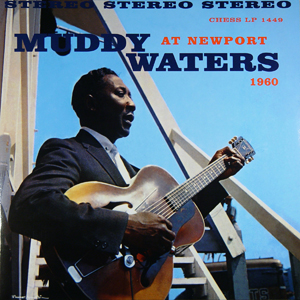
I’ve wanted a near mint original mono copy of “Muddy Waters at Newport” at an affordable price for as long as I can remember. I’ve also wanted a date with Scarlett Johansson for just as long, and at this point I think I stand a better chance with her than I do finding the record. Original copies are extant, but they’re usually thrashed. When they’re not, their pricey. There are a million variations on the stereo version, most with gaudy additions to the original artwork screaming “Warning: crappy ’80’s version enclosed. Remastered directly from the Nice Price CD.” Or they might as well. Speakers Corner claims to use nothing but tape, usually the original masters. And they have pretty good taste in what they choose to release too. Thus, I’ve settled for their stereo version. It’s gonna get me through until I strike Ebay gold on a mono original. It’s gonna happen, folks. I’m gonna win the lottery and take Scarlett on a romantic weekend getaway to Mendocino too. Watch.
This recording is a document of a historic performance that unleashed one of the greatest, most important voices in American music on an unsuspecting audience. They may not have known what they were getting themselves into when they settled in for Muddy’s set. They knew what they’d seen when he was done though. By all accounts, his show went over like a Justin Bieber sighting at a middle-America mall. This was 1960. Things weren’t like they are now. There’d been riots when a bunch of ruffians tried to storm their way into the Festival. Sets were cancelled. Muddy’s wasn’t. The video footage is white hot. He’s dapper in a suit. He’s in fine vocal form. He’s sans guitar for the better part of the proceedings, and he dances around like his damn feet are on fire. I didn’t know this was part of his gig before I saw some of the tape. If there ever were a Horatio Alger story to pass on to your children, Muddy’s story is it. (The biography is called “Can’t Be Satisfied,” by Robert Gordon. There’s an accompanying DVD of the same name with some of the footage I’ve referenced. Get them both if you have even a passing interest in Muddy, Delta blues, or American rags to riches yarns. There are none better.) The lineup for this show was missing some of the more familiar names in Muddy’s great bands. Little Walter isn’t on harp so that’s the most obvious absence. Or it would be if James Cotton weren’t such a bad man too. Buddy Guy is M.I.A. as well. To me, Otis Spann is the most important of Muddy’s side men when you’re searching for his most classic sound. He’s all over the place on “Newport.” He even has a lead vocal on “Goodbye Newport Blues.” Muddy’s voice is one of the greatest instruments in all of rock and roll, and its energy and earthiness is on full display in his Newport set throughout. Seeing this show for most folks must have been comparable to witnessing an alien invasion now. Hopefully, they’ve come in peace. But it would be impossible to know for sure until the end. Some of the more classic tunes on this set are “I’m Your Hoochie Koochie Man,” “Baby, Please Don’t Go,” and two absolutely blazing versions of “Got My Mojo Working.” I may have fainted if I’d been present. Hopefully, Scarlett would have dragged me to safety.
Speakers Corner has done us all a favor. Their take on “Muddy At Newport” almost makes me forget about my quest for the mono original. The stereo mix is balanced and at no times distracting. The instrumentation is mostly clear and discernible even in light of the technological limitations of the time and the musical genre’s emphasis on emotion over technicality. The pressing is flawless, the background noise nil. This is, however, a bawdy, ribald presentation and the recording is equally unrefined at times. You can hear the wind blowing over the vocal mic during “Tiger In Your Tank,” for instance. I love it. Man, I wish like crazy I could have been there! What would I have thought? I often wonder the same thing when contemplating Dylan’s first electric tour with the Band wherein he was consistently booed, panned, dismissed, and publicly slaughtered. Would I have played Judas? Would I have been ready for Muddy in 1960 at an upscale Jazz Festival? Lord, I hope so. I’d be so disappointed to find out otherwise. I’d rather imagine myself standing there in awe, maybe even telling the squares around me what they had coming to them when Muddy took the stage. But they couldn’t hear me anyway because they couldn’t take their eyes off Scarlett. What a dreamy afternoon July 3, 1960 must have been. It’s rough waking up sometimes.
Los Lobos “Tin Can Trust” Sutro Park
- Performance:

- Sound:

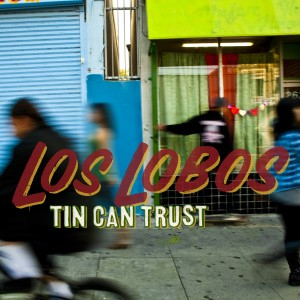
Los Lobos is a band that is quietly piecing together one of the longest careers in the history of rock music. I became aware of them as the band that covered “La Bamba” for that movie in the early ’80’s. They are, of course, so much more than that. And they’d been together for a minute prior to that movie too. Their Wikipedia page shows that they’ve been at it since 1973 which makes the band right around 37 years old. I remember seeing the Stones as a freshman in high school on the “Steel Wheels” tour which roughly coincided with their 25th anniversary. Everyone thought that was crazy. Because it was. Now, it almost seems like a drop in a bucket. Unless you’ve ever been in a band. Then, it seems like what it is. A miracle. Or, at the very least, an ostentatious display of tenacity and resolve. I’m to understand that holding a marriage together is a challenge. Los Lobos is a union of five full-time members. That takes us from the challenging realm into the almost inconceivable area of soul mate manifestation. For five. To go. Because this band tours like a gang of 22 year olds. Every year. Happy 37th anniversary, sweethearts! For 2011, Los Lobos has given us “Tin Can Trust.” It’s two sides of high quality rock and roll designed to make you sing along and tap your feet if not get up and outright boogie. They do that well. They’ve had practice.
David Hidalgo and Louis Perez handle most of the songwriting load in Los Lobos, and Cesar Rojas often contributes a cambia or two for good measure. The Hidalgo/Perez tunes can seem almost pedestrian on first listen, but they grow nicely in the light of time almost without exception. “Burn It Down” is as simple a song as anyone’s ever written. The first listen might pass you by, but you’ll find yourself singing it on your morning commute whether or not you have the car stereo or an iPod to assist you. The same could be said for the title track and probably a million others besides. The team found a formula. Some might consider that a knock on them. I call it “playing to your strengths.” I don’t have any interest in hearing Los Lobos play a 45 minute song in three acts any more than I’d care to read a romance novel by Stephen King. I go to Stephen King for attention deficient entertainment, usually while on an airplane that’s been delayed for at least four hours. I go to Los Lobos when I want concise well-written rock songs played professionally. Oh yeah, that’s the other thing about Los Lobos. You may have heard. Those boys can play. I caught them at the Fillmore a couple of weeks ago as the headliner for Bill Graham’s memorial birthday celebration. They played their guitars well and for quite a while. My date was impressed by the musicianship and winded by the show’s length. They’re opening for Clapton on part of his forthcoming tour. I hope he has his act together because Hidalgo and Rojas will. I wouldn’t want to follow them up on guitar even if my last name were “Clapton.” Check out the instrumental “Do The Murray” if you don’t believe me. Or maybe Rojas’ “Yo Canto.” The players are slippery, their abilities refined over decades of constant use. They throw the Deadheads a bone with their rendition of “West LA Fadeaway” on “Tin Can” too. I’d probably rather hear Los Lobos play the Dead than hear the Dead play the Dead. That certainly holds true for this song specifically. Please don’t throw your patchouli at me. Throw turquoise instead.
As of right now, I’d rate “Tin Can Trust” as a sturdy, fun record. I like it. If I’ve learned anything from previous experience, it’s that I’ll be more fond of this record in three months. The vinyl version is priced at $35 online. I bought mine for a little less at my independent retailer. I’m glad I did because I’m having a hard time finding the $35 value in a single platter with no extras worth mentioning. The pressing isn’t especially glamorous. “Tin Can” is housed in a strong outer cover so I guess that counts for something, but it doesn’t count for $35. The recording itself is, like most, a little cleaner than I’d like, but that’s not to suggest that it sounds sterile. The band produced the record so I suspect it sounds exactly as they intended. Everyone can be heard, no one’s stepping on any toes. That’s how it goes when you’ve danced with the same partners for decades. I’m not hearing any classics here, but I hear plenty of songs that I’ll enjoy seeing live in the years to come. That’s where the action is anyway. Just remember to pack a lunch when you come. These guys don’t appear to be going away any time soon.


